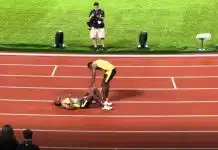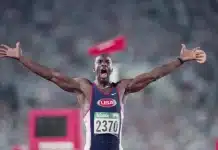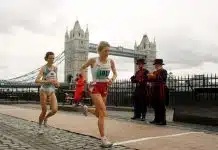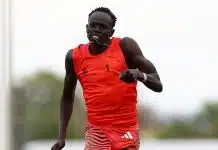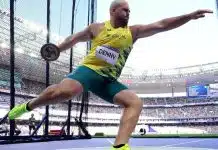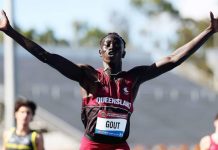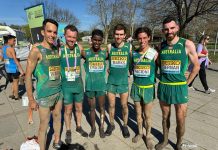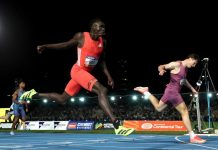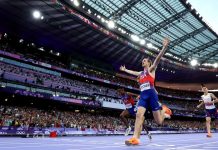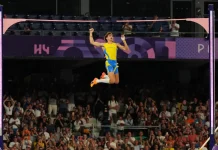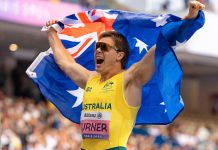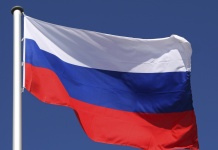By Ross Johnson – Runner’s Tribe. This article originally appeared in Australian Athlete bookazine. December 2018
Ever since I saw Keith Bateman back in the 2009 City2Surf effortlessly stride along with the eloquent grace of a silver haired gazelle; The man, the myth, the legend – has intrigued me. Bateman finished top 50 in that race and has set numerous masters world records along the way. He is an advocate of simplicity and natural form in running. As Keith paces along with his smooth technique, many have wondered what the secret behind his success is. In this interview we explore this and the makings of his new book ‘Older yet faster’ (OYF).
How instrumental has your long-time coach, Sean Williams been on your career and how did the relationship begin?
Sean has pushed and guided me at all the critical times – everyone needs that other voice of reason and that’s Sean. I went looking for a coach in 2003 when I was training hard and getting no better. I joined his elite squad in October and running with good runners helped enormously. It also started me thinking about the physics of running as I did about skiing when teaching that for 25 years.
What has been a few of your ultimate running highlights and achievements to date?
The five personal best times in 2010 and 2011, which were also age-group world records, especially 9th place in the state 10,000m (31:51.86) at the age of 56.
When and how did you get into running? At what point did it become a major driving force in your life?
I first started at the age of 29 as a way of getting fit for cross-country skiing back in Scotland but I took to running better and continued ever since. It wasn’t until 2000 when I came to Australia that it really started to take over my life, and it was 2007 when I started making technique changes, stopped getting regularly injured and started running much faster.
Do you believe the sub 2-hour mark will be broken in the next decade?
I think probably not, and I think the Nike effort was a brilliant advertising ploy – win or lose they got masses of advertising.
Would you recommend a gradual crossover, correlating with increasingly good running form, to zero drop shoes for almost anyone?
Over the years of helping change people’s technique Heidi (my wife, podiatrist and co-author with whom I work very closely) and I have learnt that the best way is to ‘reset’. Once you are a precise runner even a 1 or 2 millimetre drop in a shoe is very noticeable. We say change technique and rebuild gradually and according to the soreness of newly found muscles. We describe the process in our book.
How apart from a strength program, can you counter good running form breaking down when fatigue sets in during a marathon?
We say don’t run a marathon (or any other race) unless you can run it (or almost all of it) in good form. Start with short races and build over years. Focus on running with good form, using the simple tricks I developed to self-correct on the go – eventually, by repetition, strength and good form arrive and then speed naturally increases by a big margin.
Apart from running, which is the most running-specific strengthening, we don’t find it necessary to do strength work. It does help to strengthen parts of the body which might get stressed when running with poor form, but this is not a problem if you run well. The exception, when changing technique, is the areas that are weak due to lack of use such as the feet, calf muscles (they will strengthen just with use but be cautious) and glutes. This is where Heidi’s strengthening program comes in.
What’s your current weekly mileage and what was the last injury you had?
This week, I did my longest run since 2011 (15km). That increased my weekly average from 38km to 48km. I will be building up to perhaps 100km per week, but I have no set plan apart from listening to my body. My last significant injury was a seized-up Sacroiliac joint in my hip in 2011 due, we think, to sitting on a plane from the USA immediately after a competition and a marathon (2:43.07). I have had a series of niggling Achilles tendon problems and a few calf problems which I put down to being hit by a car in 2012 and having greater flexibility in one ankle after 40 years following varicose veins removal in one leg – and being too impatient while my leg readjusted to the changes!
In your book, you state that one of the main flaws of bad technique is over-striding, which causes unbalanced high-impact landings. How quickly can this be corrected, and have you found some people can’t correct this?
This is the only thing you can really do wrong – pressing too hard on the ground in front of your body. Over-striding is of course a matter of degree – your foot must touch the ground in front of you when running since your foot is on the ground for a non-zero time. This is how I explain it: While running, if you are pressing on the ground behind, you are accelerating, on the ground in front of you and you are leaning back and braking. However, if you land near-vertically aligned when at constant speed then there is minimal braking and you’ll get maximum rebound from the strength and elasticity in your unrestricted feet and legs. This results in more air time, which means a longer stride, and more speed. I show clients how to do this and then how to monitor and adjust during runs. It’s actually very simple but it has taken me years and thousands of clients to distil the lessons into this simple and effective form. As Albert Einstein said, “If you can’t explain it simply, you don’t understand it well enough.”
Technique can be basically corrected in the brain immediately by following some simple procedures to feel what a good landing is like, to start off correctly, and then some easy ways to self-check during the run. The delay is in waiting for the muscles to rebuild in the right proportions to support the technique, and not to do too much too soon which is why we provide detailed advice on the transition – what will happen, how to manage it and what to do if you get an injury on the way. The risk from over-training in the transition phase is to the calf muscles, the Achilles tendons and the posterior tibial tendon (especially if orthotics have been worn for a long period).
Don’t we naturally over stride when we run, even as kids? If so, why did we evolve this way?
No, you see kids at the beach running barefoot and smoothly over sand, grass and concrete and it is nothing like the adults slowly moving past with a hybrid walk/run action and hardly leaving the ground. that’s the difference. We think people would maintain their good form if they just kept running and interfered as little as possible with their biomechanics by putting sloping, soft unstable bases under their feet. In fact, some parents have asked about technique sessions for pre-teens and all that was needed was to get them into a flat shoe or no shoes and run to take them back to good form.
Reading the book, this quote stood out for me, “Rest. This is nature’s greatest healer. And “pain is nature’s messenger.” Even when not injured, do you believe runners should be taking at least one rest day a week and why?
We think there is no set rule and it depends on the individual – for instance, as I build up now, I need at least one day’s rest, sometimes two days! Everyone needs to recover at their own rate. The guide for everyone is how the muscles feel. However, if you are sore after a run you need to question why that area is hurting.
It seems like the trend of zero drop shoes has died off in recent years, with a trend back towards 10mm drop shoes. What is your current view on the running shoe market, types of foam, heel to toe drop heights and finally the Nike 4% shoe, that is possibly giving a good number of runners an advantage in races?
This is purely a marketing-driven trend – try buying a flat shoe in any high street store! It’s also a big call to say that any shoes give an advantage, but I do note the text: ‘possibly’ giving a ‘good number of’ runners an advantage. If you refer to IAAF competition rules, you’ll see that if they did give an advantage it would break competition rules (Rule 143) so what’s the point apart from sales?
Our view is that any drop is unnatural and potentially damaging to the body (until proven otherwise), as are a host of other shoe features which we analyse in a chapter called ‘Shoes – what you should know’. Our evidence for this is that Heidi’s cure for almost all patients is to get them into flat, thin, flexible shoes for all activity, re-strengthen the feet, calves and glutes, and show them how to run correctly – it never fails!
Many runners simply cannot make zero drop shoes work for them. They experience forefoot pain, or Achilles/calf problems. Why do you think it is that you have been able to make them work, while most runners it would seem prefer traditional 10mm drop shoes?
If you wear chunky, raised heel shoes or orthotics for years your body will adjust accordingly. Many runners put on flat shoes and say, ‘my calf muscles are sore’. Great! That means they are starting to work. Achilles tendons will have shortened when constantly wearing raised-heel shoes, so it takes time for them to lengthen back to the way they should be which is why there must be a readjustment period.
As for forefoot pain, that’s a technique problem – often where the runner thinks they should ‘forefoot strike’ or ‘forefoot’ run – this comes from the misinterpretation of images and videos. The only time there should be more pressure on the forefoot is when accelerating or running uphill.

In OYF you talk about how most foot problems are almost exclusively due to ‘modern’ shoes. There is next to no real science to back up your claims, and it’s easy to find countless anecdotes from runners with the exact opposite view to you. Are you arguing that brands like Nike/Asics/Adidas, who average a 10mm drop, are causing running injuries?
Of course, there is no ‘real’ science – there is however a lot of pseudo-science for various aspects of shoes that changes over the years as often as soap-powder and cleaning product commercials. You would have thought that both shoe companies and soap companies would have arrived at a conclusion after so many decades of experiment on people! People still get shoe-shaped feet instead of feet-shaped shoes. Think Morton’s Neuroma and corns between the toes and then there’s damage to the metatarsal heads from having a raised heel and turned-up toe box. If you mess with the foundations, you will cause stress. And if you stand up on a thick sole there’s extra torque on the Achilles tendon as the cushioning takes the load, and a greater likelihood of twisted ankles and torn tendons. There’s nothing more stable than the ground – keep close to it.
We base our claims on classical physics and observation – and we offer up our work to physicists, engineers, medical professionals and runners (especially injured ones) for assessment and constructive criticism. If something we say is not correct, we want to make adjustments in collaboration with these people. This is something we have been doing for the past decade and is the reason why it has taken a team of people 4 years to finish the revised second edition of our book. We have studied, consulted and then refined our methods, always looking to improve. We have taken information from, and followed the experiences of podiatry patients, running clients and readers of edition one and asked physicists and engineers to check our work. David Blackman’s blog of his technique change was particularly useful to us: www.blackersdoesbateman.blogspot.com.au
We know what we do works, and we have countless examples to fall back on. As far as injuries are concerned, Heidi has spent well over ten years fixing runners by putting them in flat, thin, flexible shoes and using her strengthening program to re-strengthen weakened areas of the body. She has never failed to fix plantar fasciitis even with patients who have had it for years. I, on the other hand, have never failed to fix runner’s knee and ITB pain with one technique session. In short, we constantly reverse the damage caused by unsuitable shoes and make runners go a lot faster in the process. Readers must make up their own minds.
Why don’t we see the world’s best marathoners where zero drop shoes?
Do they have a choice? The biggest factor is maybe that they must wear their sponsor’s shoes. The second thing is that they don’t wear the type of supportive ‘boots’ you see so many struggling, injured runners wearing. Can you imagine Mo Farah in a pair of Kayanos? And thirdly, as with Haile Gebrselassie, a great runner can adapt – I saw he was quoted as saying he had to re-learn how-to run-in shoes. It’s different in shoes – it can be done, and I feel that it’s much easier to run at higher speeds in these shoes with a drop than it is at lower speeds. I am still working on the physics of that, but it wouldn’t apply to the average runner anyway. Isn’t it better to start like Haile Gebrselassie with great technique and take it from there?
In your view is learning running and good form as technical than, say, learning the sport of tennis?
No, it is much easier to re-learn to run like you did as a child – in practical terms it’s usually one technique-change session and a follow up in a few months. It just takes time and patience to build new areas of strength, but the good news is, it’s a life-long change. David Blackman, who changed his technique (together with his coach) after reading the first edition had 37 years of bad form to overcome. After 15 months he equaled his 5km PB set 10 years earlier, and then, earlier this year at the age of 51 he ran a lifetime best 800m in 2:07.64.













